The PlayStation 5 is just a few days away from launching to the public, but for the last two weeks we’ve been putting the console through its paces. Two of our editors—Josh Harmon and Mollie L Patterson—have spent hours using the system each day, exploring the system software features, trying out a variety of native PS5 games, and testing PS4 titles through backwards compatibility. While we don’t feel confident offering a definitive score for the system, given that we’ve only played a small percentage of its launch games, we do have a strong sense of where Sony’s new console excels and where it comes up a bit short.
Read on to find out our verdict, broken down by the PlayStation 5’s major features.
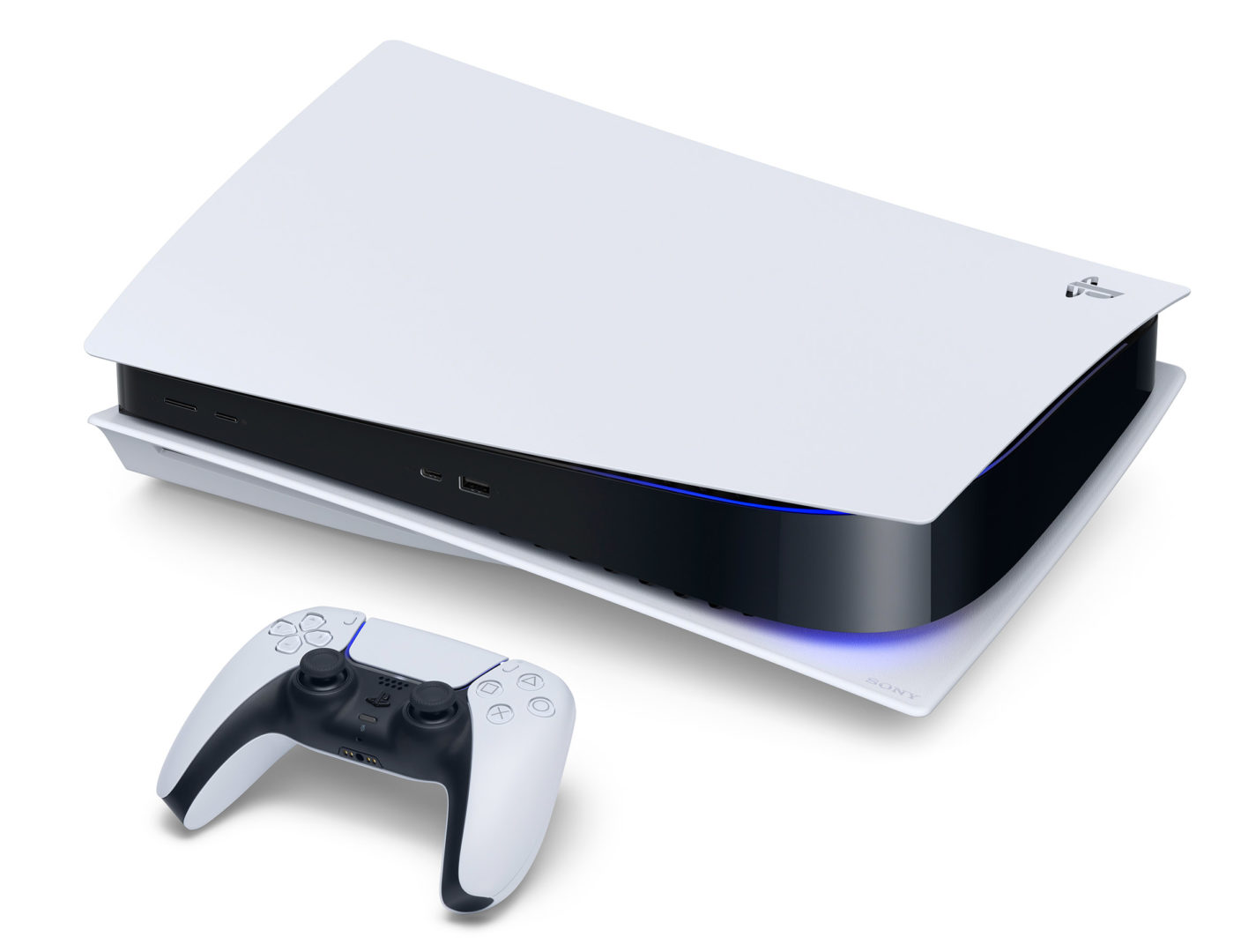
The Console
By now, you probably already have strong feelings about the console’s design. After seeing it in person for so long, it’s still weird, but we’re starting to get used to it. The swooping, stylized elements of the form factor, perhaps the most contentious aspect of its design, do make it stand out from the other consoles on our shelves. They also seem to pad the already-large console’s width, length, and height just a bit. If you’ve got a small entertainment center, you may struggle to fit the PS5 in, but we haven’t had that issue.
The Digital Edition, which we haven’t seen in person yet, may resolve some of our design concerns. In particular, the disc drive on the standard PS5 looks a bit out of place, a lump on the bottom trying desperately to hide itself away. One of us has used the console primarily in its horizontal orientation, while the other has used it vertically. We both feel our choice is the “correct” one, so take that as you will. We both agree that the mandatory stand is prone to slippage if you move the console around at all while it’s horizontal.
Of course, aesthetics don’t matter for much in the long run when it comes to a gaming console. Eventually it’ll fade into the background of your setup and you won’t notice it much—as it already has for both of us.
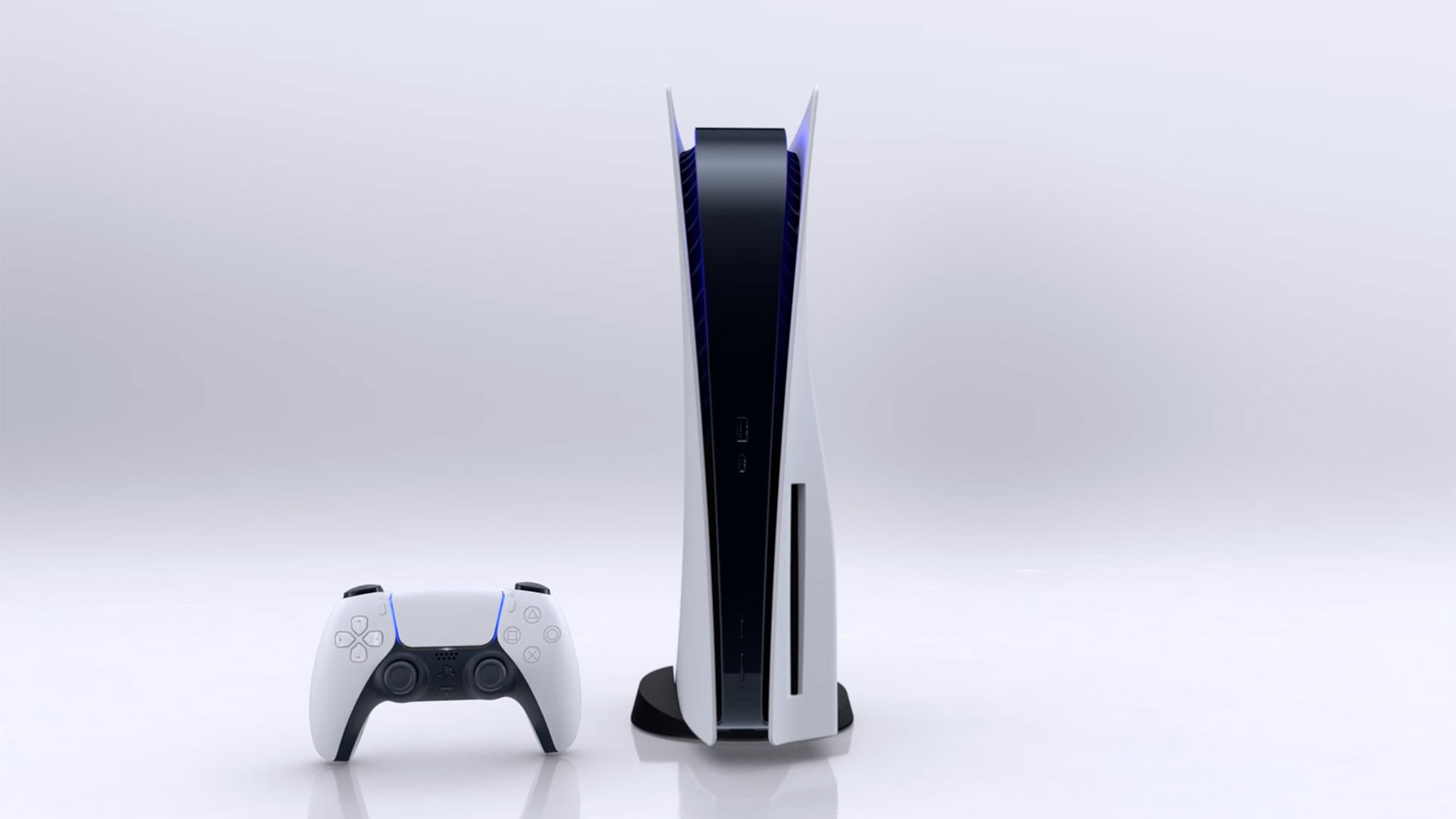
Practically, we do have some early concerns about those design elements. In the long term, we’re concerned that the glossy black finish of the console’s front may attract unsightly scratches over time, since it’s so glossy. In particular, this gloss runs right up against the front USB ports, making it prime to unintentional scratches when you’re plugging in a cable. To wit, one of us already has a few minor, USB-induced dings.
It’s also worth noting that the faceplates, even in this short span, have proven quite prone to attracting dust, and the fact that they’re white means it’s quite noticeable. If you have the top of your console exposed, you’ll likely need to dust it regularly. On a related note, we do appreciate that Sony has included easily accessible vents that will collect dust so you can easily vacuum it out. It’s far too early for us to have used it, of course, but it’s good to know that option is there long-term.
In terms of functionality, there’s not much we’ve learned about the physical console itself that wasn’t apparent from the stat sheet. Perhaps the one exception is the USB ports. Of the four on the consoles, two are in the front and two are in the back. Just one, on the front, is a USB-C port. The other three are USB-A, and the two back ports offer USB 3.0 “SuperSpeed” functionality. (The USB-A on the front does not.) At the moment, the reliance on the older ports is not much of an issue. While the ports on the controllers and headsets themselves are USB-C, they also come with USB-C to USB-A cables, so you’ll be using the USB-A ports to charge them. But as USB-C increasingly becomes the standard, the decision to offer only one on the PS5 may date the hardware. Given that the best trait of USB-C—you don’t have to worry about plugging things in upside down—would have been great for things you’re repeatedly plugging in and unplugging, like charging a controller, it definitely feels like a slight missed opportunity already.
One of the biggest improvements of the physical hardware over last-gen, however, might be how it sounds. The PlayStation 5 runs ludicrously quiet and surprisingly cool. It’s a huge improvement from both the original PS4 model and the current PS4 Pro, both of which can sound like a jet engine and give off considerable heat. The only time we’ve noticed any noise from the PS5 at all is when installing games from disc.
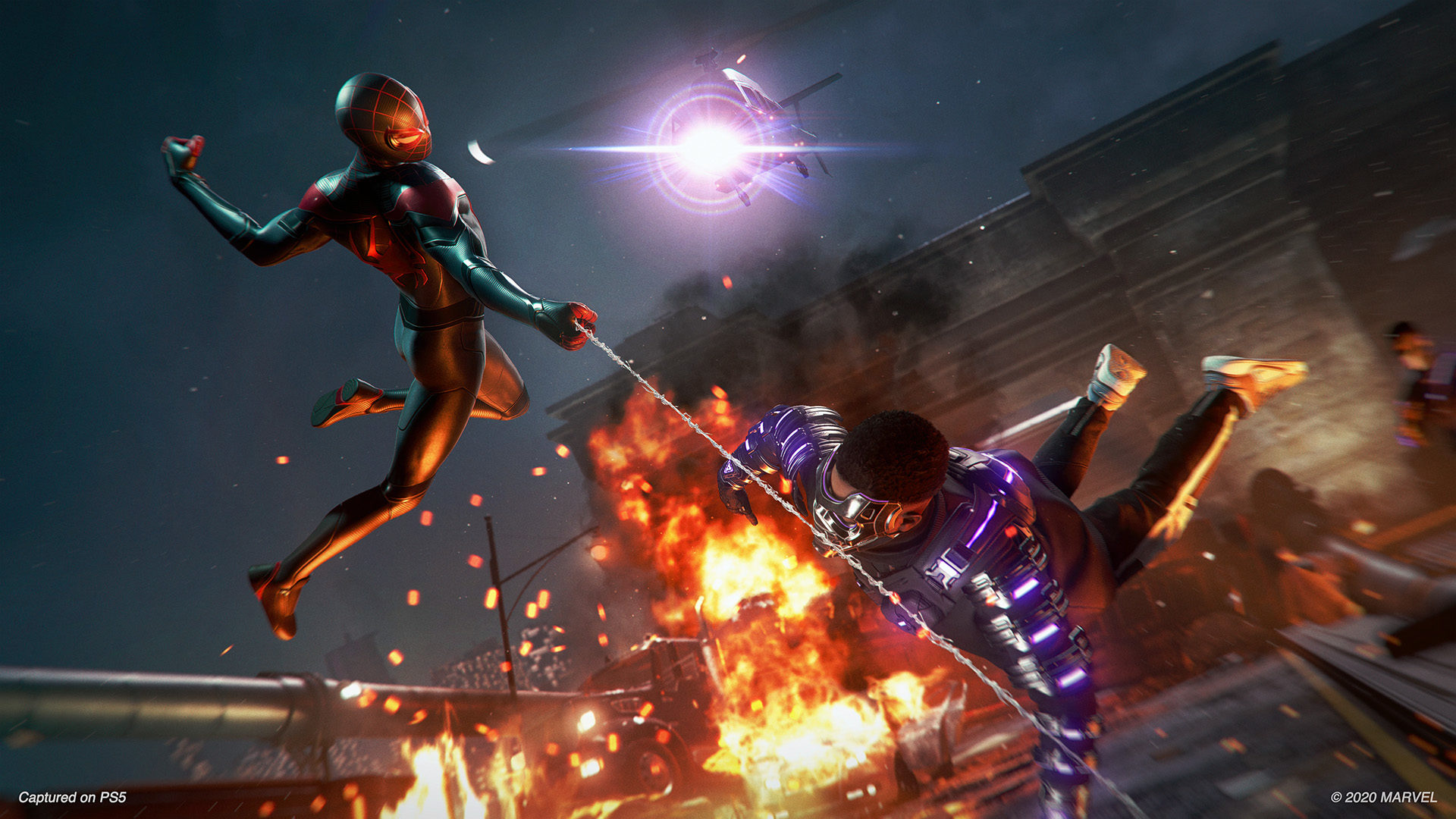
Next-gen Gaming
As we said above, we’ve only gotten serious face time with two of the PlayStation 5’s first-party exclusives, Spider-Man: Miles Morales and Astro’s Playroom. As such, we don’t really have a full picture of how developers will be able to take advantage of the new, more powerful hardware under the console’s hood.
That being said, there’s a lot to like in what we’ve already seen. Astro’s Playroom, though hardly a visual powerhouse, looks great and runs smoothly. And in Miles Morales, the upside is even more apparent. If you doubt that this gen will offer a noticeable visual leap, just zoom in on one of the character models on the pause screen. We never thought we’d be talking about clogged pores in Peter Parker’s nose, but they’re there to look at in glorious 4K, if you’re into that. The raytracing in the game is also quite impressive, even affecting gameplay in minor ways. (We’ve grown accustomed to keeping tabs on offscreen enemies during combat by using reflections in nearby windows.)
What’s disappointing, then, is that the game can only offer ray-tracing in 4K resolution when you’re playing at 30 frames per second. If you want to run at 60 FPS, you’ll need to switch modes—and lose a not-insignificant amount of graphical quality in the process. Perhaps as developers spend more time with the console, they’ll discover ways to optimize the graphics and offer ray-tracing in 4K at higher framerates. If not, there may be an argument to be made that Sony launched this console just a bit too early, and it’ll take a mid-generation upgrade akin to the PS4 Pro to fully realize the potential of true 4K gaming. On this point, it’s safe to say we just won’t know for another year or two at the soonest.
At the end of the day, it’s also difficult not to feel like (through no fault of Sony’s, mind you) that the overall quality of video game graphics has reached the point where returns will start to diminish. There’s a notable improvement, even in the standard areas of polygon counts and texture resolution, but it’s not so far off from the best-looking PS4 games that your jaw will drop—at least not yet.
What does feel like a generational leap is the way games are taking advantage of the system’s much faster solid state drive, or SSD. Load times in native PlayStation 5 times are so short that opening a game from a cold start takes just a few seconds before you’re actually playing. It makes switching between games far less annoying. And in theory, it’s the SSD that will most change the way developers build games for the PS5, as that faster data throughput could pave the way for gameplay that would be impossible on current systems. For now, though, the obvious benefits are faster boot-ups, restarts, and fast travel within games.
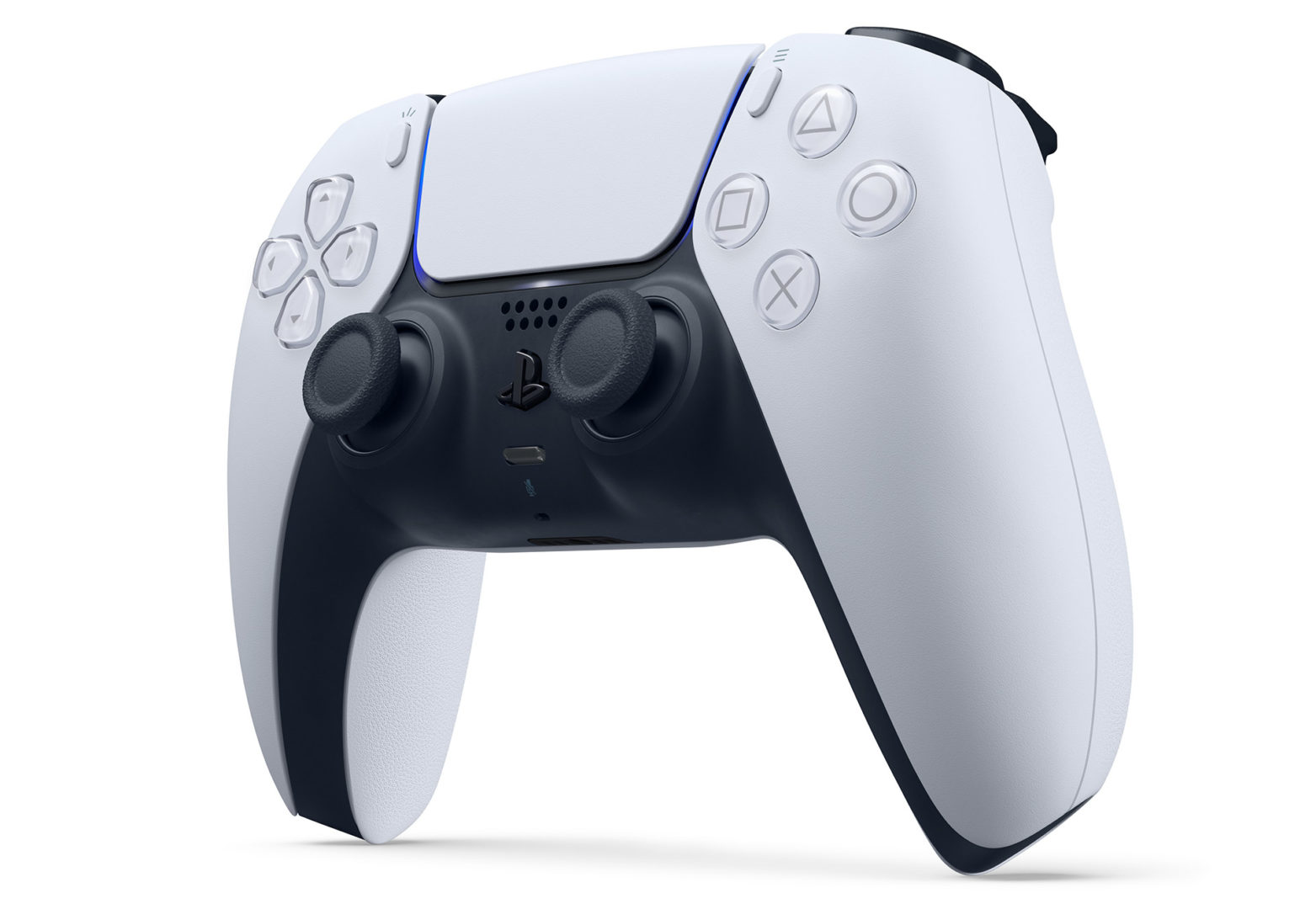
The DualSense Controller
More than anything else about the PlayStation 5, the new DualSense controller is what divided our two reviewers. Is it the best gamepad ever made, or just a decent controller? Is the overall shape more ergonomic, or is it a step down from the DualShock 4? Are the sticks too much like an Xbox controller now?
We can’t give you a clear verdict on any of these aspects of the controller, since we’re pretty much deadlocked. But it’s safe to say that if you’re a fan of previous PlayStation controllers, this one won’t be a disappointment. In fact, much of the controller should be familiar on that front. The D-pad works great, but it also feels pretty similar to the DualShock’s. The bumpers and triggers (ignoring some of the added tech on the latter we’ll get to shortly) feel the same, if a little meatier. The face buttons are likewise free of surprises—though Sony’s decision to remove the colors from the four symbols is strange, given that many PS4 games that will be playable in backward compatibility do make specific reference to those colors.
One returning aspect that’s been greatly improved is the touchpad, which looks and feels much better than its last-gen counterpart. The wider surface area and tapered shape make it easier to swipe reliably during gameplay, and clicking it in feels a bit less mushy. Of course, most developers barely used the DualShock 4’s touchpad as anything other than a large button, so we’re not sure how much that will matter in the long run.
That brings us to the two big selling points of the DualSense: The adaptive triggers and the advanced haptic feedback. Both these features, as evidenced by Astro’s Playroom and Miles Morales already show potential for improving immersion and, quite possibly, allowing for innovative gameplay.
In Astro’s Playroom, for instance, the dynamic resistance levels of the adaptive triggers makes one of the more gimmicky segments, when you’re in a spring-powered frog suit, feel quite different and, well, springy. But another gameplay gimmick, where you rock climb in a monkey suit, actually uses the adaptive triggers to introduce a new gameplay element: fragile handholds. You can squeeze the trigger right up to the resistance point for a firm grip, but if you push past that, you’ll break the handhold and fall. It’s tough to convey the experience through text, but it really is, in some small part, a new way of interacting with the game that can only exist thanks to this specific controller. The big question is whether developers will find a way to make use of the triggers, especially in third-party games, or if they’ll be rejected as a gimmick and fall by the wayside.
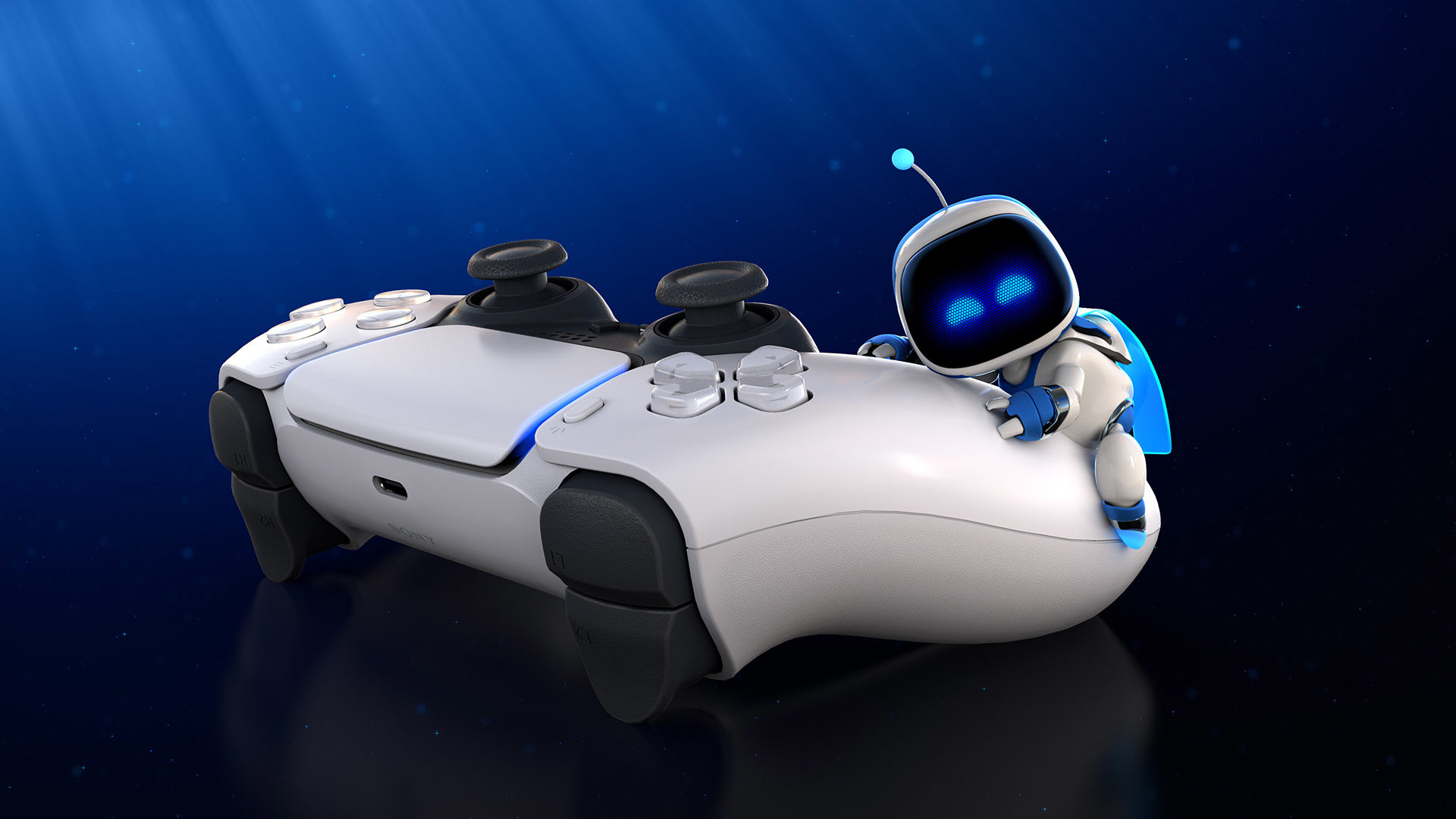
The haptic feedback has already led to some serious wow moments in the PS5’s launch lineup, too, like feeling individual raindrops hit your bot in Astro’s Playroom, or the familiar, tactile cha-chunk of a subway car stopping in the opening moments of Miles Morales. But it doesn’t necessarily feel revolutionary, at least not yet, and it’s unclear how consistently developers will be able to use it to improve immersion in a noticeable way.
Also new to the DualSense is a built-in microphone, which has the potential to make voice communication in multiplayer games much more convenient for players who want to use it. In our tests, it works just about as well as the microphone on the official Pulse 3D wireless headset. And if you’re worried having a mic on the controller means you’ll forget that it’s on, the light-up mute button is an easy way to check. (There’s also a setting to mute the microphone by default whenever you log in.) A related but admittedly minor improvement is that the controller will no longer try to use the microphone when you plug in Apple EarPods, an issue that still crops up on the PS4.
One final worry is the fact that, for now, DualSense controllers are only available in white, and the underside of the grips has a dense texture that seems to attract dirt a bit quicker than average. One of our reviewer’s controllers is actually already looking a little dingy down there. Should he keep his hands cleaner? Maybe! Will it wipe off with a paper towel and a gentle cleaning solution? Probably! But controllers are functional hardware, and this is one case where aesthetics may have won out on practicality. It’ll take a little work to keep the DualSense bright and shiny.
The User Experience
We plan to cover our impressions of the PlayStation 5’s system software and user experience at greater length in the coming days, since the conditions of the embargo mean we’re not allowed to discuss two big features: the PlayStation Store and media capabilities. For now, though, we’d like to address some of the biggest new features.
One of the most obvious changes is that you won’t be relying on a single home screen to do everything the way you did on PlayStation 4. Now, the view you get on booting up is a single row of 11 fairly small square icons, with one for the PlayStation Store, one for the Explore section, eight for your most recent games, and one on the far right that will take you to your full game library. One feature that’s notably (and, in the opinions of one reviewer, inexcusably) absent is the ability to create folders of specific games or apps.
The Explore section, the default view when you start up the system, shows news stories, videos, and live broadcasts of “games you follow.” The list of followed games appears to be automatically generated based on what you own and what you’ve played, and there doesn’t seem to be any way to manually adjust it. We can’t imagine using it very often, but it may be a good way for less engaged players to stay informed about updates and special offers relevant to their games.
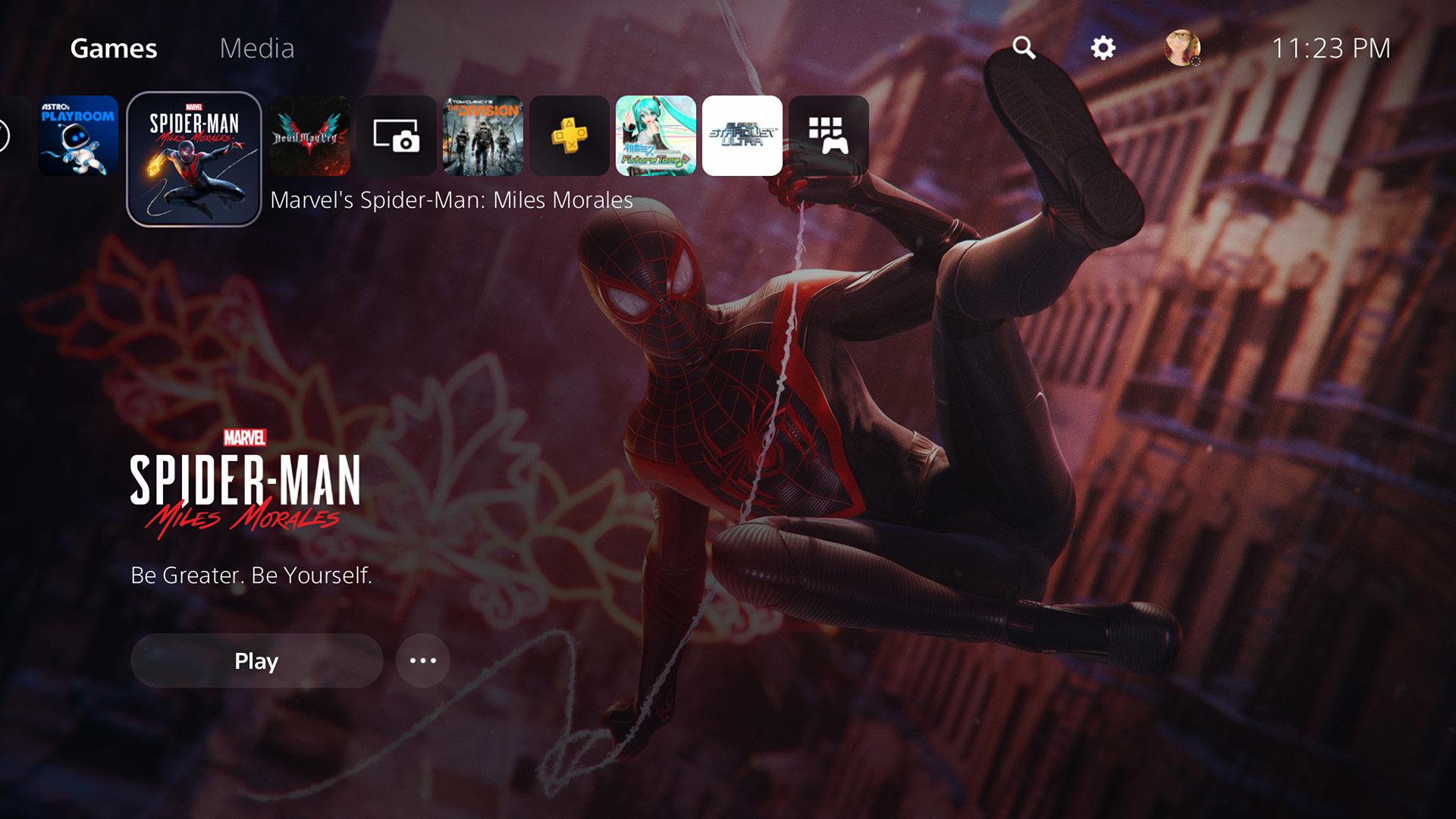
When you scroll over to a game icon, the entire background fills up with an image of the game, with a lot of empty—some might say wasted—space given over to the visuals. If supported by the title, the menu will also play a snippet of the selected game’s music, which is a cool if totally superficial addition. In this game view, the space below will show your trophy count, any add-ons available for purchase (if there is one), the game’s logo, and a play button. Press down, and you’ll also see a feed of official news stories and a list of “Activities.”
This Activities feature has the potential to be one of the most interesting and useful on PlayStation 5—if it lives up to its potential. Essentially, Activities are dynamically generated cards that offer shortcuts to content inside of games. If you’re playing an open-world title like Miles Morales, you’ll see main story content and side missions available to you. Select one, and the game will automatically load to the point where you can start. You can even use them as a shortcut once you’re already playing, offering an even more streamlined way to hop around than the game’s built-in fast travel system. Sometimes an Activities card will highlight a trophy you’re close to earning, or, in the case of Astro’s Playroom, your current ranking on a leaderboard. Sony has promised that some of these cards will also allow you to pull up help videos for completing certain tasks, though we haven’t seen that in action yet.
We also know some third-party titles, like Fortnite, already plan to use Activities as shortcuts to access different aspects of the game. In particular, being able to boot straight into multiplayer matchmaking in the mode you want seems like a natural fit. But there doesn’t seem to be any way to pin a specific card to make sure it’s always there, or to make one that might not be listed. (This in particular seems like a missed opportunity. Imagine being able to make your own Activity card that booted into your favorite multiplayer game, joined a party chat, and sent party and game invites to your usual crew.) How much we use these cards will likely depend on how smart the system is about deciding what to show us, and how consistently they’re implemented across games. Still, there’s a lot of potential here, especially for more casual players.
Activities are the most noteworthy thing the PlayStation 5 adds to its home screen when compared to its predecessor. But the biggest change overall may be what’s missing. What you won’t see on this home screen is the PlayStation 4’s familiar row of secondary icons, for things like Trophies, downloads, your friends list, and your account info. These elements have essentially been condensed into three icons at the top right of the home screen, next to the a clock. The first icon is a handy search feature for finding games, movies, add-ons, or anything else available in your library or the store. There’s a shortcut to the settings menu, where you’ll find the familiar set of options. And there’s an icon for your user profile, which pops out a small menu with quick access to things like your Trophies and Online Status.
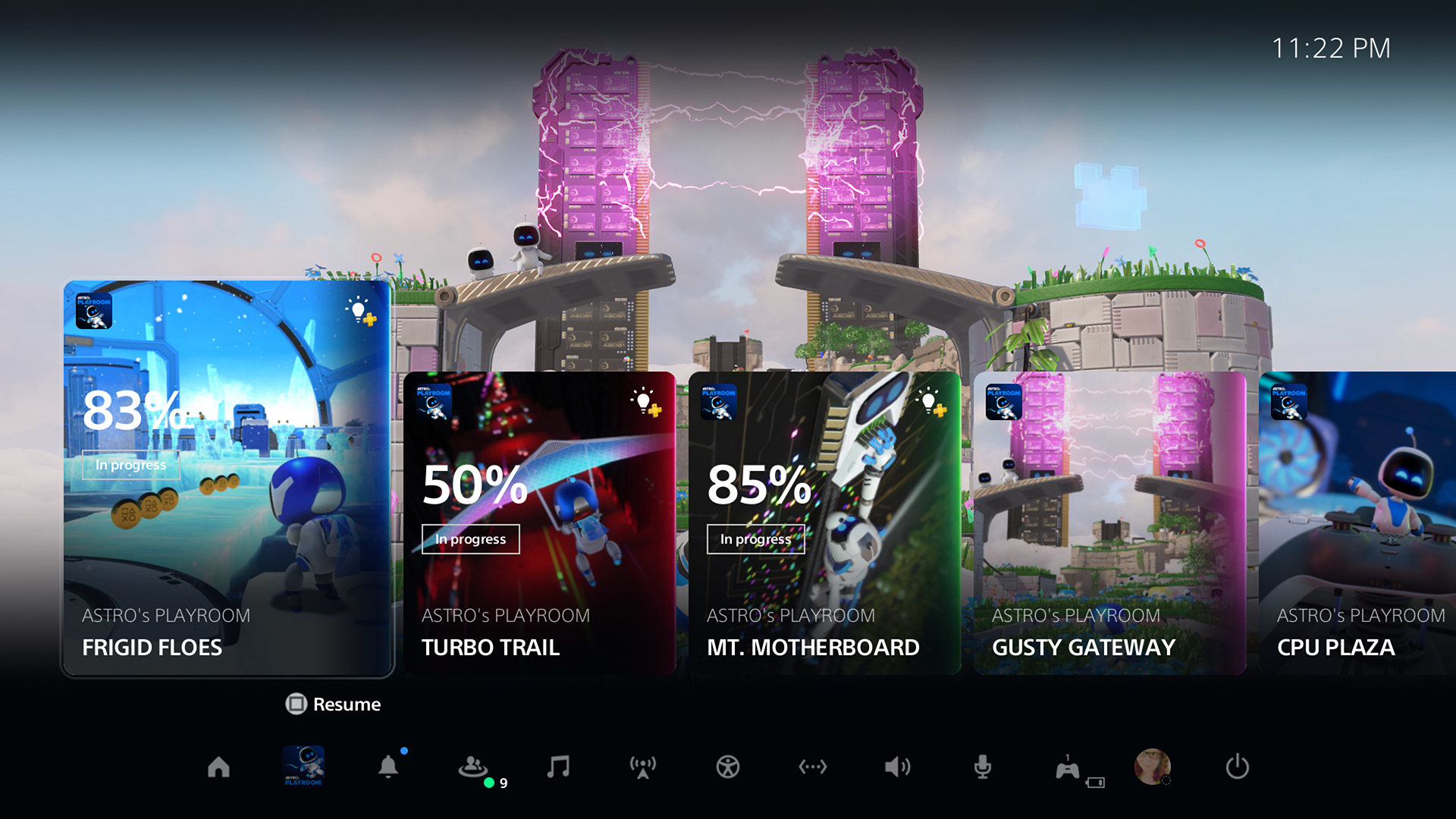
Judging by the streamlined approach, we’d guess Sony doesn’t really intend for you to use the home screen much once you’ve actually booted a game. Case in point: On the PS4, a short press of the PlayStation button brought up the home screen, and a long press brought up a quick menu where you could see your friends list and simple options for adjusting audio and turning off the system. Here, that’s essentially reversed. A short press will boot up an entirely new quick menu, called the control center, along the bottom of the screen. Getting back to the home screen requires you to either pick it from the control center or hold down the PS button. (Our brains still haven’t adjusted, but they’ll get there eventually. Probably.)
So far, the control center seems like a decent way to handle the most common tasks you’ll need. There’s the Switcher for quickly swapping over to a recently played game. (It’s worth noting that this doesn’t appear to have any kind of “quick resume”—you’re booting each game from scratch. But PS5 games boot so fast you may not care.) There’s the Game Base, where you’ll find your friends list and recent parties. Most of the social features we’ve tested so far appear to work well enough, even cross-gen party chats with PS4, but it’s of course still early.
There are also icons that open small pop-up menus for common settings, like sound and microphone, as well as one for your profile (which is the same as the one on the top of the home screen, just duplicated). While there are some options on the control center you can customize—adding icons for accessibility and network settings, turning some of the defaults off if you won’t use them—it’s kind of bizarre that there’s no direct shortcut to the full settings menu or search. If you want that, you’ll need to go back home first.
One final aspect of the UX we’d like to touch on today is the Create button, which replaces the PS4’s share button. The improvements here are immediately noticeable. A quick press will bring up a small menu at the bottom of the screen allowing you to capture the last 15 seconds, 30 seconds, 5 minutes, or 1 hour of gameplay. From here, you can also start a recording that will keep going until you stop it, broadcast to a linked YouTube or Twitch account, and change capture settings. You can even choose between different file formats and resolutions for your screenshots and videos (which now includes webm). If you just want to take a quick screenshot without all these extra options, you can simply hold down the Create button instead.
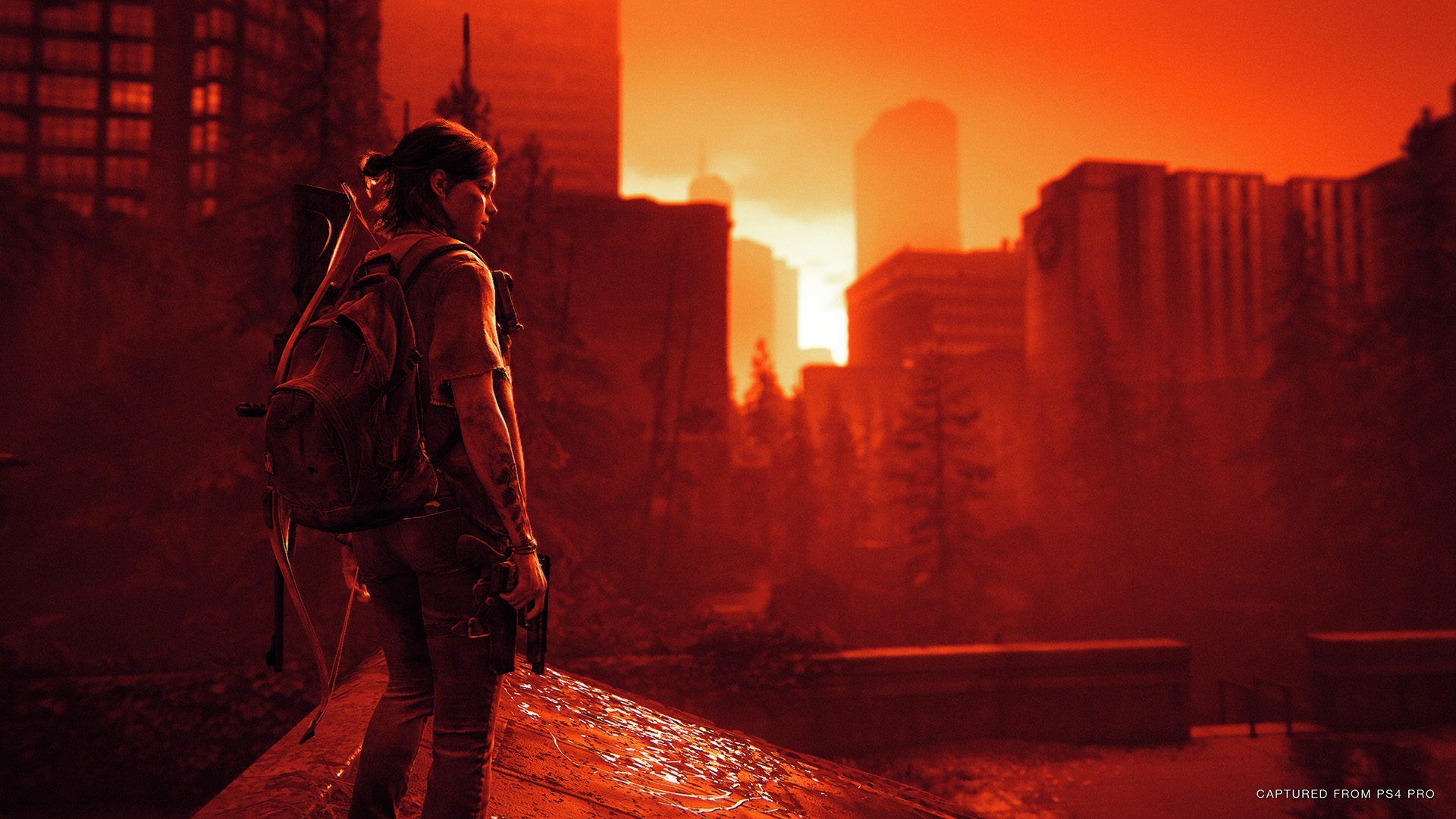
Backward Compatibility
There’s no question that Sony’s messaging on backward compatibility has been a bit confusing, with vague promises of “nearly all” PS4 games working, followed by a list of specific exceptions, followed by even longer (and apparently unofficial) lists.
While we obviously didn’t have time to test every single game, we did put in time with quite a few bigger titles. After Doom Eternal appeared on a list of games, scraped from the PlayStation Store website, that might present issues on PS5, we played through several hours and didn’t notice any issues whatsoever. Another game mentioned as potentially having issues was Super Stardust Ultra, but that too ran fine from what we tried.
However, for days we encountered repeated issues in Apex Legends, a game with no warnings. Characters would teleport, the speed of the action on-screen would hitch only to fast forward, and at one point all four network warning indicators came on at the same time. We were unable to replicate these issues on a PS4 Pro, and this was on a stable internet connection with top-tier download and upload speeds in a major metro area. The issues seem to have gotten better in recent days, so it’s entirely possible the problem was with Respawn’s servers, if not just sheer coincidence. We’re sharing it not because we know what happened, but because it was our only real hiccup with backward compatibility.
We know some first-party Sony games will receive patches to improve performance on PlayStation 5, but details here are still a little spotty, and it’s unclear if this approach will extend to third-party games. We tested one game that has already been patched, Days Gone, and can confirm that the framerate definitely stays at 60 (or close to it), with fast travel times cut dramatically.
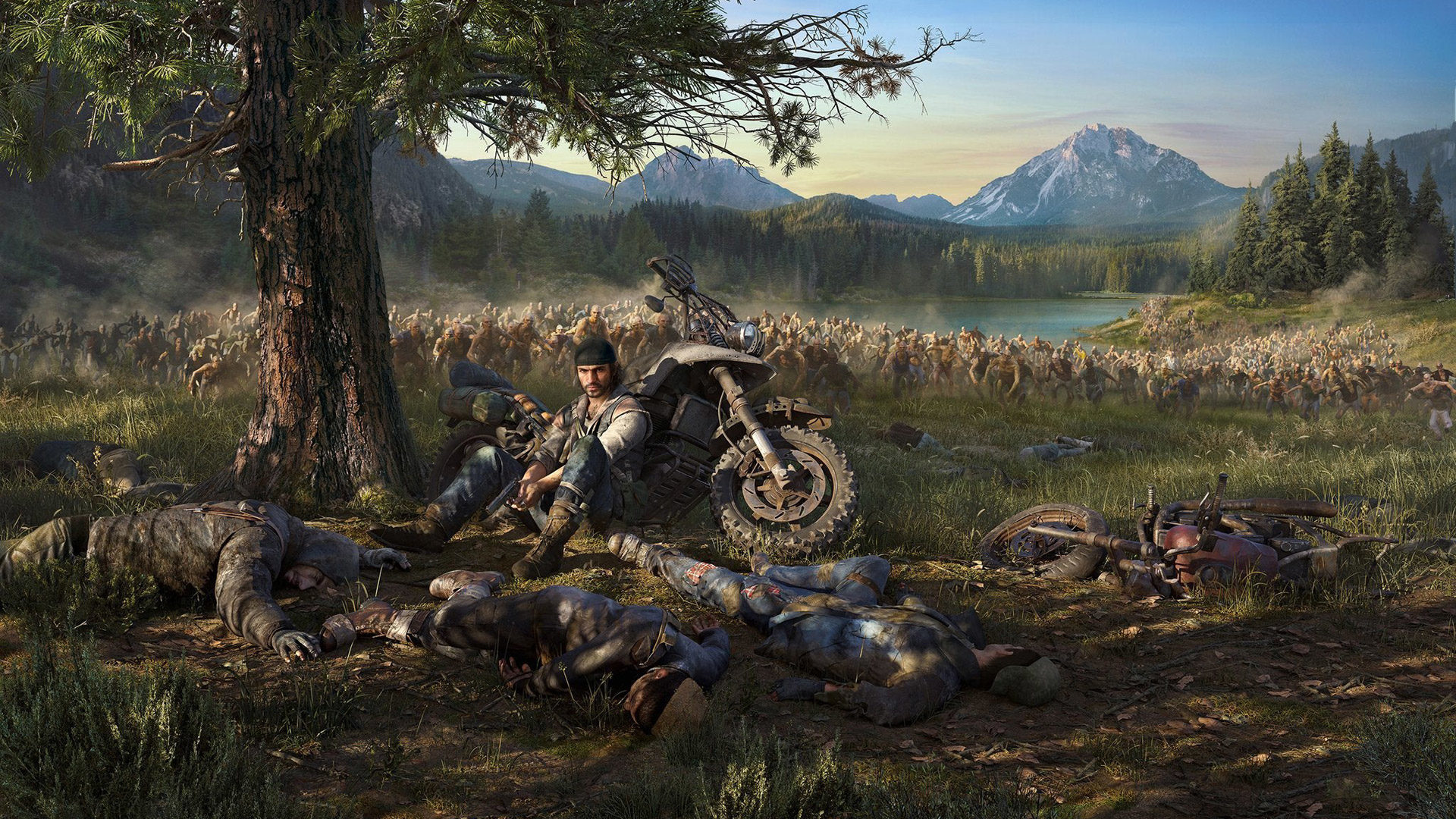
Across the board, in fact, we noticed much quicker load times in PlayStation 4 games running on PS5. Still, the loads weren’t as lightning-fast as the ones we’ve seen in native PS5 games. It may be that the gains on that front, even with the SSD, will not be as large as you can expect with games that are engineered to take advantage of the new architecture.
Every PS4 save file we tested loaded just fine, though it’s worth noting that PS4 saves and PS5 saves are stored differently on the system, and if you get an upgraded, PS5-native version of a game you’ve already played on PS4, support for importing your save—essentially converting it to a PS5 version—will be spotty and game-dependent.
If our experience is a good representative sample, odds are good you’ll find the PlayStation 5’s backward compatibility to do exactly what you need it to. Games that struggled on the PS4 Pro should run smoother, with or without updates, and those who get added work may even offer higher framerates and resolutions. With a few (still unclear) exceptions, you should be able to bring over your PS4 game collection fairly seamlessly.
Unfortunately, one of those “few exceptions” is an incredibly big one. P.T., the infamous free first-person horror game created to serve as a “playable teaser” for the ill-fated Hideo Kojima-led Silent Hills, is a no-go. Even when bringing it over on an external drive, the PS5 will recognize the game, but refuses to either play it or allow it to be copied to the console’s internal storage. Though it may or may not be connected, some of the older PS4 demos that are still attached to our accounts, such as those for Battlefield Hardline or Fighting EX Layer, are also blocked from being used on the PS5. So, we’re left to wonder if there might be a situation where older games that have been removed from the PlayStation Store are blocked by default.
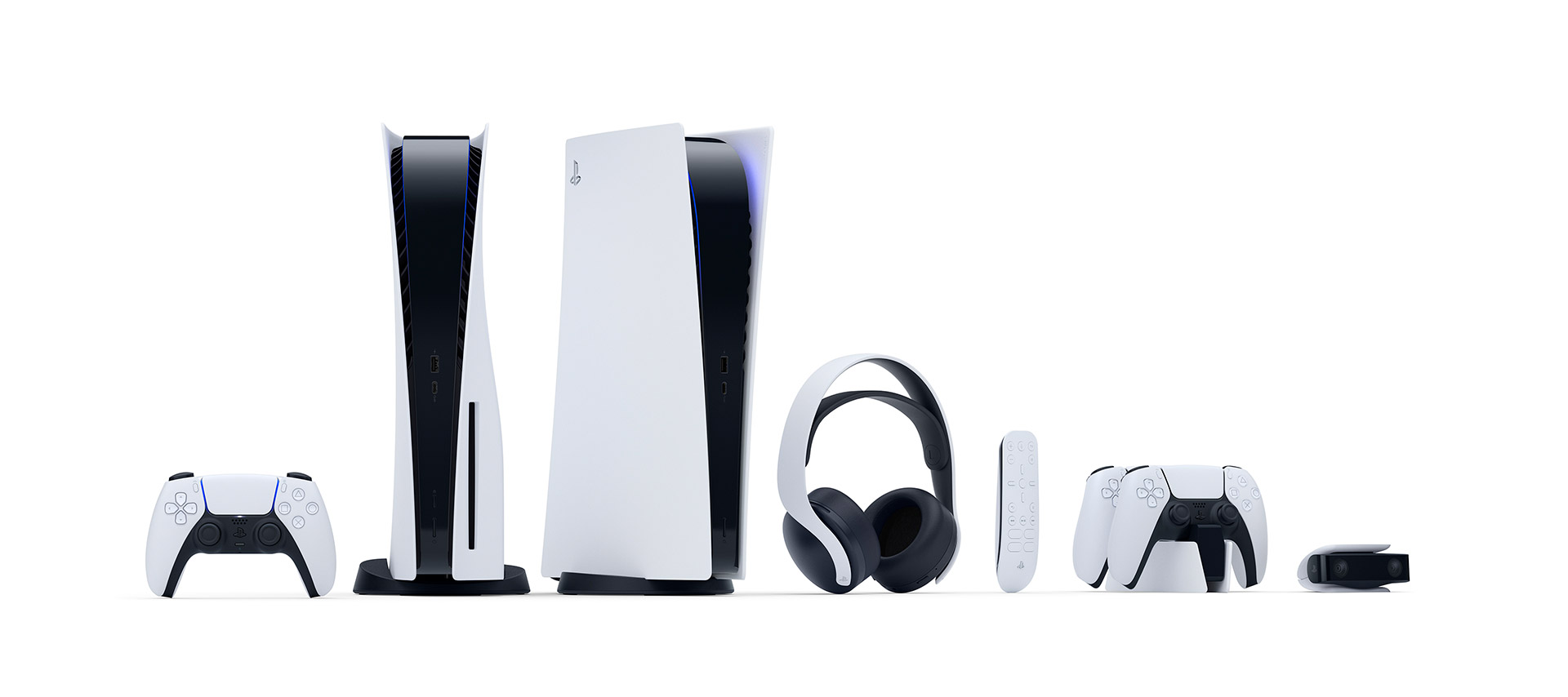
The Accessories
In addition to the console and a spare controller, Sony sent along three added peripherals. These aren’t likely to make or break your decision on getting a PS5, but our impressions may help guide your supplementary purchases.
The DualSense Charging Station allows you to charge two controllers at once, and it works great. You will need to adjust to the exact angle for the controllers to seat and charge properly—it’s probably a little more vertical than you expect, and the click you hear when you get it right is mostly audible, not tactile. Still, you’ll catch on after a few tries. It’s also a good way to store controllers when they’re not in use, since it gives them a much smaller footprint than if they were lying flat.
The PlayStation 5 HD Camera seems technically up to par, but we haven’t been able to test many features, like streaming gameplay with the camera view picture-in-picture. The clamshell design is oddly endearing, but you may have a hard time getting the lens angled properly if you try to put it on top of your TV. Eventually one of our reviewers just gave up and put it below the TV instead.
The Pulse 3D Wireless Headset is a decent iteration of Sony’s current line of PS4 headsets, with many of the same features. All the buttons work well and the pairing is seamless—though it will take up one of your console’s USB ports. If you’re willing to sacrifice one of the two on the back, you’re fine. But it’ll be annoying if you try to put it up front, since you’ll need to unplug the headset to plug in the controller for charging while you play (unless you get a USB-C to USB-C cable, not included with the console, for that.) The 3D audio hasn’t struck us as particularly revolutionary just yet—and the sound quality itself felt like it was missing a certain “oomph,” even when compared to a standard pair of Apple EarPods plugged directly into the controller—but we’re also not the biggest audiophiles.
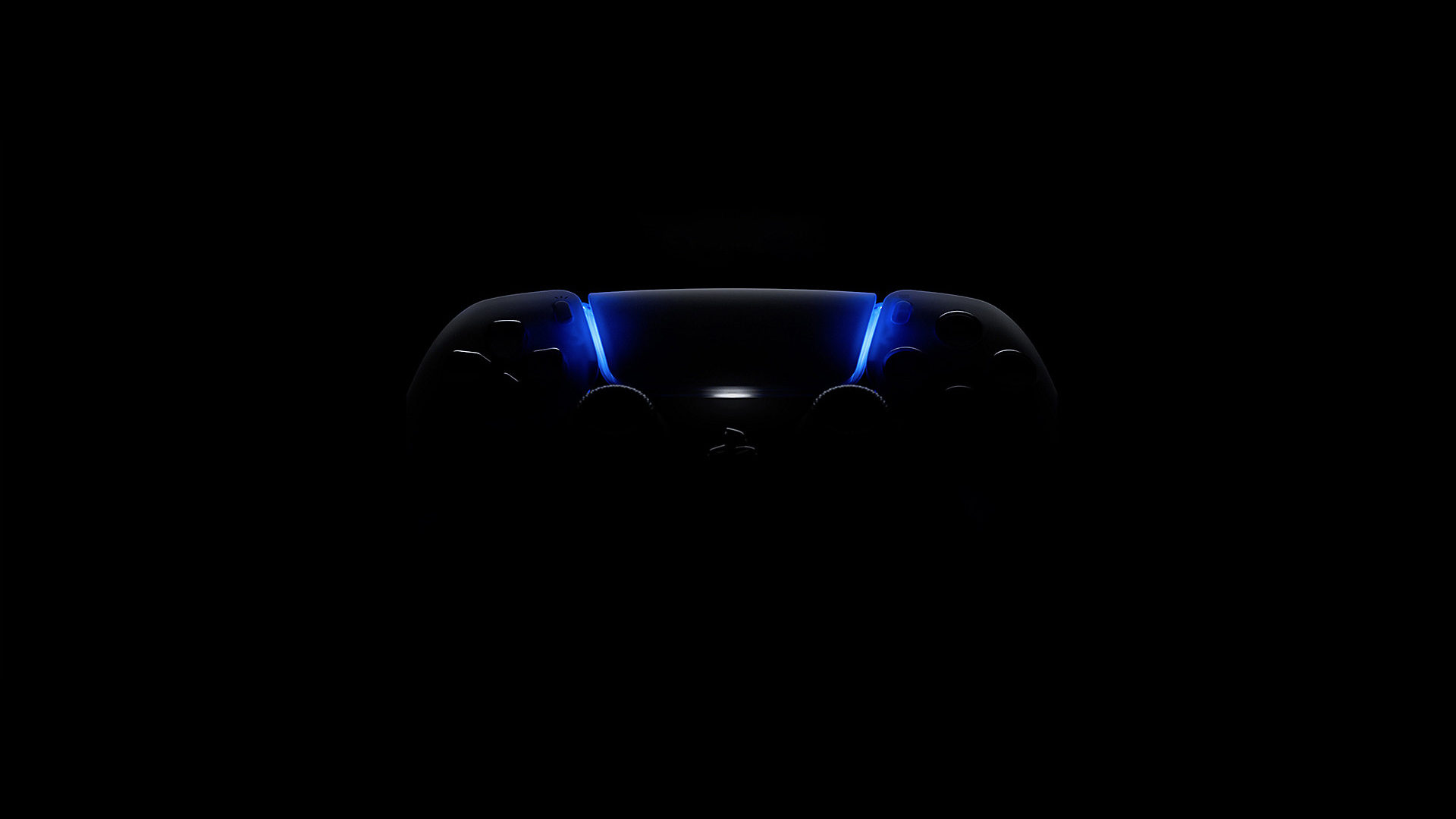
The Verdict
As we stated above, we don’t think it’d be fair to give the PS5 a review score this early, with so little sense of its launch library or how many features will be implemented in third-party games. Instead, we’d like to close by focusing on a simpler question: Given our lengthy hands-on time, are we confident in the system’s future potential?
In a word, yes.
Both of our reviewers are not just confident, but genuinely excited to see how the platform will grow. While it can be notoriously difficult to judge how a console will evolve over its lifespan, the PlayStation 5 already looks like a system that will streamline the way we play games. It’s already clear Sony has underpinned its new console with a lot of great technology and clever design choices that will give it room to grow as developers become more comfortable with the system. On the graphics front, raytracing is an impressive technology that works well insofar as we’ve seen it, but we think it’ll be the less-visual aspects of PS5 games that really begin to shine over the course of this generation. Furthermore, the astonishing advances we’re already seen in loading times presage just how much of a game-changer the SSD is likely to be, enabling game experiences and worlds that just wouldn’t be possible on previous hardware. And while it may not be the sexiest bullet point, the simple added horsepower of an up-to-date CPU means that games, past and present, are going to run much, much better. And that’s important.
The game library is another bright spot. We’ve already played two standout exclusive games (exclusive to PlayStation, at least) on the console, and the rest of the first- and third-party launch lineup includes quite a few heavy hitters. The roster of titles Sony has promised to deliver over the course of the next year—like Ratchet & Clank: Rift Apart, Horizon Forbidden West and God of War Ragnarok—will no doubt only improve that picture.
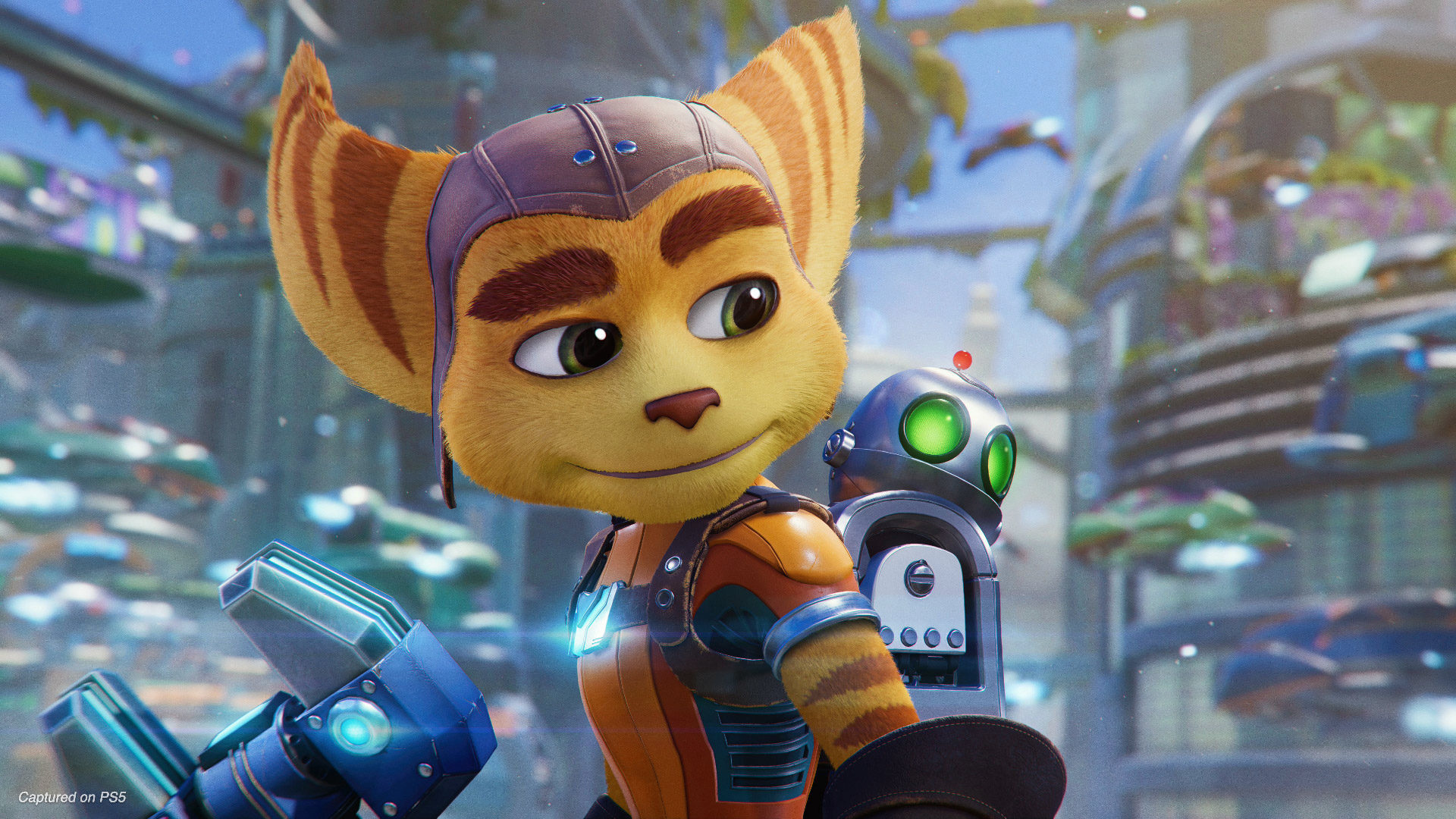
That’s not to say we have no worries. Do we want to see some UX improvements allowing for deeper customization? Yes. (Give us back our folders.) Are we still unsure whether third-party developers will actually make full use of the most exciting aspects of the DualSense and system features like Activities? Yes. Could Sony be clearer on potential backward compatibility issues? You bet. But those are minor uncertainties eclipsed by a two-week testing period that was almost completely smooth and enjoyable.
All in all, it’s safe to say the PlayStation 5 is poised for a great start—and we can’t wait to see what happens next.
Disclosure notice: Sony Interactive Entertainment America provided EGM two PlayStation 5 consoles, along with accessories and digital video game codes, for the purposes of this review.